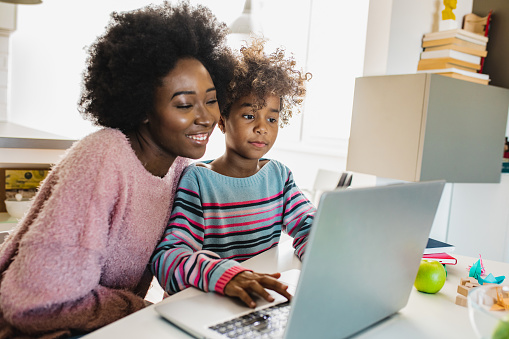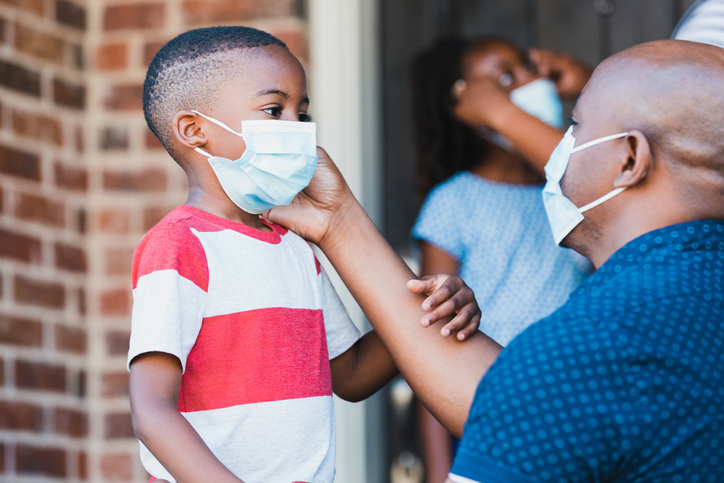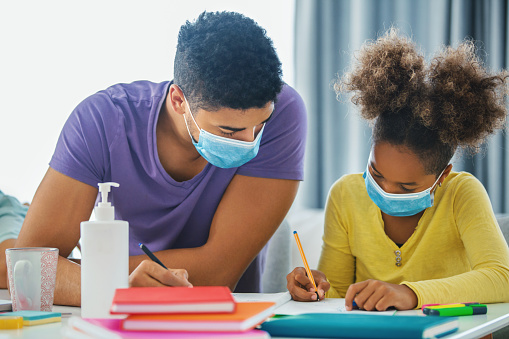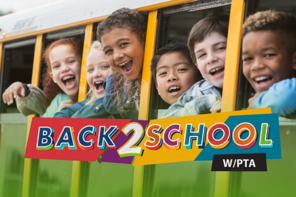Going back-to-school has taken on new meaning this year. Schools across the country have adopted different approaches to ensure the safety of staff and students, deliver solid instruction and provide equitable access to resources.
And the logistical challenges are just the tip of the iceberg. After months of uncertainty, disruption, gaps in instruction, social isolation, fear and devastating news, kids may be struggling to acclimate to the new normal. Meanwhile, parents have been coping with their own set of stressors, from juggling competing demands to enduring financial setbacks. In other words, you’re depleted, too. Yet despite these challenges, kids are resilient and you’re far from helpless.
Here are five ways you can help your child transition throughout the school year.
1. Keep It Positive
Children look to the adults in their lives to gauge how they should react to a situation. If their parents seem alarmed, they’re going to feel less secure. If their parents seem hopeful and project calm, they’re going to retain a sense of optimism. So be thoughtful about how you discuss their school’s plans.
If you focus on what’s lacking or make derogatory remarks about their teachers or administrators, they’re going to absorb that attitude. Kids can have a hard time dislodging a comment that a parent made in a fleeting moment of frustration.
You don’t have to be disingenuous or suppress your emotions. Instead, process your feelings with a friend, partner, colleague or therapist in private, and make an effort to think flexibly and fairly. Validate your child’s concerns and fears, then help them think more expansively. Focus on everyone’s efforts to ensure they have the best, safest experience possible.
To ensure kids feel energized about this school year, convey enthusiasm. Take school photos, if that’s something you typically do, or make a special school breakfast, or call a grandparent at the end of the day to share highlights of the school day. And keep the home classroom area fun with decorations and personalizations that help your child feel excited about learning.
2. Design Your Own Transition Support Plan

You may have had a mock day to ease your child’s anxiety about moving up a grade. However, continue conversations and activities throughout the school year. It can be hard for children to feel like they’re missing out on the traditional experience. Try to approximate non-academic school activities as much as you can.
That might mean taking them to play on the school playground, walking the school grounds, hosting a virtual hangout with classmates, or scheduling a socially-distanced “meet and greet” for your child with their school counselor or an administrator. At the same time, take advantage of any virtual activities their school offers.
3. Focus on Your Child’s Strengths
Your child might have a hard time with the transition if they’re behind academically, perhaps because they didn’t have access to specialized instruction or adequate technology. Focus on the skills they’ve developed during quarantine and any innate qualities you think will help them be successful. If they feel they are up to the challenge, that confidence will bolster their resilience.
You might point out to your child that they were able to pivot overnight and exhibit flexibility during a trying time, or that they were a huge support to younger siblings, or that they were self- starters despite the steep learning curve.
Help them establish realistic expectations. Point out that a large percentage of students will have lost ground, and that educators expect to have to catch kids up and address their needs. Reassure your child that they won’t be letting you or their teachers down if it takes time to get back in the groove.
4. Tell Them What to Expect

Whether your child is five or 15, it may be jarring to discover how everything is different. They may understand they’ll have to wear a mask and maintain social distance, but not grasp the full scope of the situation.
Students may be spending all day with the same small group of students in the same classroom. They may not visit the art room or participate in sports or get to audition for a play. While the need for these tweaks may seem obvious to us as adults, your child might not make the same leap of logic.
You don’t need to give them every detail. As you get school updates, provide enough information to help them understand what to expect and to ask you questions. They’ll do better if they know in advance, for example, if there’s an unexpected closing, if arrival and dismissal patterns will be different or if they’ll have recess in much smaller groups and need to eat lunch in the classroom.
5. Consider Your Child’s Social and Emotional Needs
Know your child. Introverts might be finding the return to daily in-person interactions (or even a hybrid approach) exhausting. Extroverts might feel relieved to get more social stimulation but then struggle with “quarantine FOMO” (fear of missing out) if they have to adhere more closely to social distancing regulations than their peers. Conversely, if fall for you means a continuation of virtual learning, an extrovert might be deeply disappointed. Talk
to them about their feelings and how you can best support them.
For some kids, performing in front of peers all day is a source of stress, whether they have specific learning needs, a fear of public speaking, or have been the target of bullying. For these kids, remote learning may have been a reprieve, and returning to the classroom could trigger anxiety. Validate your child’s concerns and work with the school to establish a support system.
Everyone is experiencing a base level of anxiety layered on top of the normal return-to-school anxiety, but if you notice major changes in your child’s appearance, sleeping, eating, socializing or academic performance, consult with a therapist or their pediatrician.
The same holds true for you. Your child is studying you and looking for reassurance. They need you to be a steady, calm, and consistent presence through all these changes in their life, so practice self-care and don’t hesitate to seek professional help for yourself, too. You’ll be better equipped to help your child transition to school, whatever form it takes.
Phyllis L. Fagell, LCPC is the author of “Middle School Matters,” the school counselor at Sheridan School in Washington, D.C., a psychotherapist and a frequent contributor to The Washington Post and other publications. She was a guest on our podcast, Notes from the Backpack—check out her episode!





